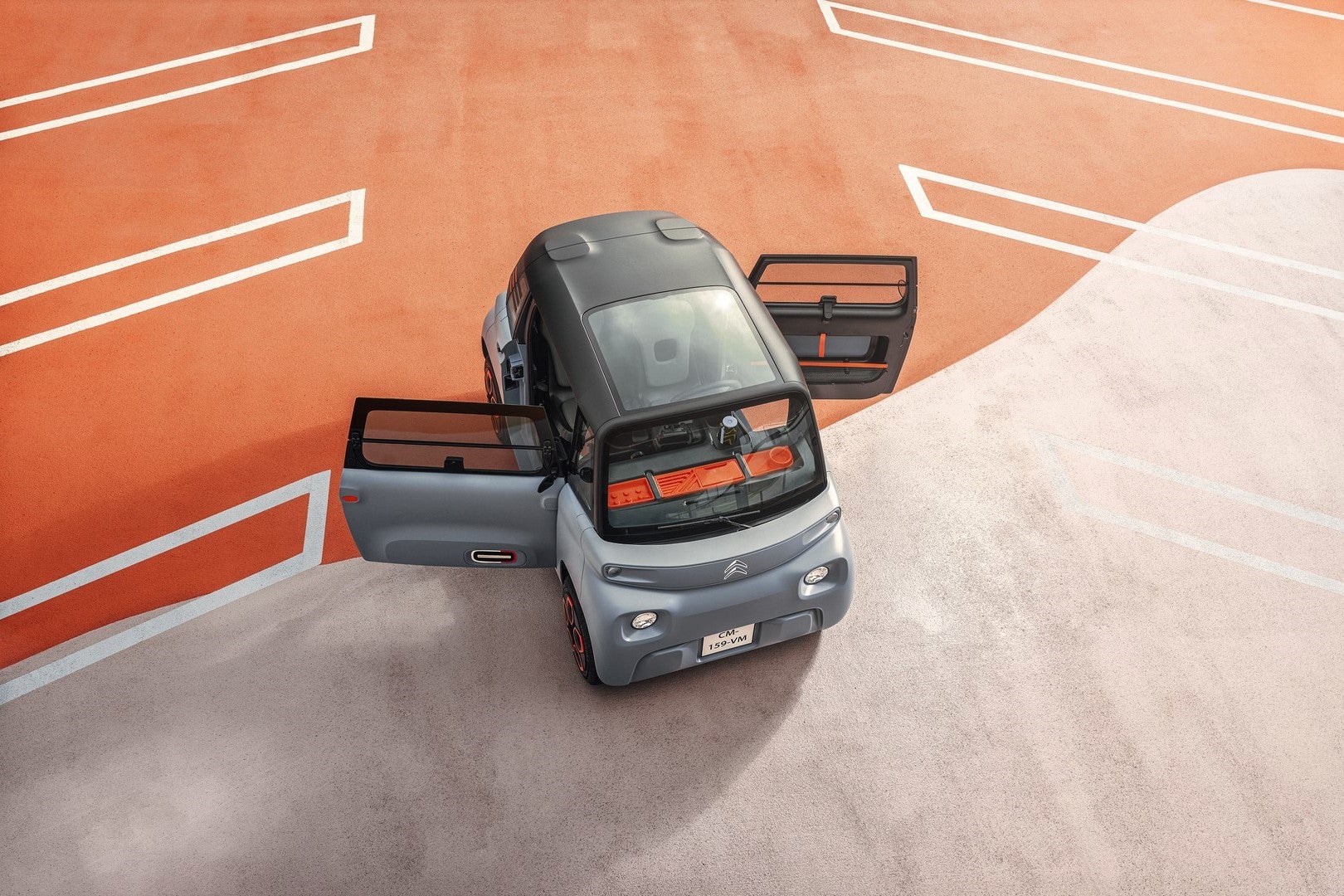Citroen Ami: How a tiny electric car became a favourite of students, eco-warriors and unlicensed drivers
Heralded as the new 2CV, made from the same plastic as Lego and with fewer parts than a bicycle, Anthony Cuthbertson takes a look at the new vehicle taking Paris by storm, which legally isn’t even a car...

In the 1930s, French engineer Pierre-Jules Boulanger was driving down a narrow country lane when he became stuck behind a horse and cart. His frustration at the slow traffic was so great that when he returned to Paris he handed his team an unusually specific brief. He wanted a car that could “transport two farmers, 50 kilograms of potatoes or a barrel of wine… and in the back carry a basket of eggs without breaking them.” The specs also called for the vehicle to be fuel efficient, easy to drive and cheap.
What rolled off the assembly line a decade later was the Citroën 2CV: A car that proved so popular – not just among farmers – that it would remain in production for the next 40 years, selling more than nine million units worldwide. It became an icon not just for Citroën, but the entire country – as recognisably French as a beret or a baguette.
But unlike other car makers, who went on to remake modern versions of classics like the Mini or Beetle, Citroën never reimagined its most successful car. Instead, the 2CV’s eggs appear to now be placed in a brand new basket: the Citroën Ami.
Subscribe to Independent Premium to bookmark this article
Want to bookmark your favourite articles and stories to read or reference later? Start your Independent Premium subscription today.
Join our commenting forum
Join thought-provoking conversations, follow other Independent readers and see their replies